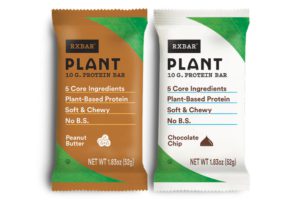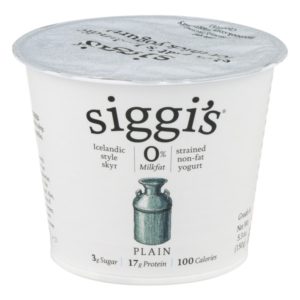Plentiful Protein: How Much Protein Do We Really Need?
The Recommended Daily Allowance Is Less Than Optimal
 The RDA (Recommended Daily Allowance) for protein is 0.8 grams per kilogram of body weight and is the absolute minimum amount needed to not become ill from protein malnutrition (known as “Kwashiorkor”- think of pictures of children with protuberant bellies and toothpick arms, drawn faces). However, most academic protein scientists and nutrition professors agree that 0.8 grams per kilogram is not the optimal intake, nor was it designed to be. The minimal amount not to die is distinct from the optimal amount needed for optimal life span, immune function, brain aging, and muscle and bone preservation. Keep in mind that previous generations thought living to 70 was achieving “longevity”. Now in the US, we have an average lifespan of almost 80 years and an ever-increasing number of centenarians. The prevalence of frailty and an unhealthy final decade in our oldest generation is very apparent.
The RDA (Recommended Daily Allowance) for protein is 0.8 grams per kilogram of body weight and is the absolute minimum amount needed to not become ill from protein malnutrition (known as “Kwashiorkor”- think of pictures of children with protuberant bellies and toothpick arms, drawn faces). However, most academic protein scientists and nutrition professors agree that 0.8 grams per kilogram is not the optimal intake, nor was it designed to be. The minimal amount not to die is distinct from the optimal amount needed for optimal life span, immune function, brain aging, and muscle and bone preservation. Keep in mind that previous generations thought living to 70 was achieving “longevity”. Now in the US, we have an average lifespan of almost 80 years and an ever-increasing number of centenarians. The prevalence of frailty and an unhealthy final decade in our oldest generation is very apparent.
Minimal To Not Die, Is Not Optimal!
Protein recommendations were calculated based on nitrogen input and output testing on SEDENTARY individuals, and only represent the day-to-day REPLACEMENT of lost protein by looking at nitrogen balance. It does not account for our need for various amino acids (the building blocks of protein) to participate in metabolic pathways. For example, tryptophan (an amino acid) is made into serotonin which regulates mood and satiety. Serotonin is made into melatonin and is required for proper circadian rhythm and sleep. Leucine, another amino acid, is solely responsible for muscle fiber synthesis, playing a messenger or “regulatory” role. There is a leucine threshold, meaning a certain “dose” of leucine will tell the body to repair and rebuild muscle. Arginine is needed to make nitric oxide, a key vasodilator, so insufficient supply could lead to high blood pressure over time. Cysteine is used to make glutathione, part of our antioxidant defense and detoxification system, so shortchanging that supply might impair those pathways. Some aminos are utilized directly in energy production. None of these metabolic “jobs” were assessed in the 1950s when the original protein/nitrogen balance work was performed. Those recommendations are very out of date and not consistent with what we know now about optimal health and aging.
 Middle-aged and older people are particularly problematic, as they don’t absorb protein as well which means not all the protein that is eaten is absorbed. Vegetarians have slightly higher protein needs because the amino acid profile in plant foods is not exactly matched to our needs, so they need a “buffer” with 10-20% extra protein. Then there are athletic adults, stressed adults, or adults who are challenged with chronic health issues, such as autoimmune disease (3-5%), metabolic syndrome, or diabetes (likely 50% or more) which is a chronic inflammatory state, or muscle or bone loss (which is most of us as we age).
Middle-aged and older people are particularly problematic, as they don’t absorb protein as well which means not all the protein that is eaten is absorbed. Vegetarians have slightly higher protein needs because the amino acid profile in plant foods is not exactly matched to our needs, so they need a “buffer” with 10-20% extra protein. Then there are athletic adults, stressed adults, or adults who are challenged with chronic health issues, such as autoimmune disease (3-5%), metabolic syndrome, or diabetes (likely 50% or more) which is a chronic inflammatory state, or muscle or bone loss (which is most of us as we age).
What Is An Optimal Protein Intake?
We also have a lot of new studies that suggest protein consumption controls our satiety, so people who are struggling with overweight, prediabetes or diabetes, or other complications of insulin resistance, may fare better on diets that are 20-30% of calories from protein, or around 1.2-1.6 grams per kg body weight. Some studies suggest that humans will keep eating and keep feeling hungry until we meet our protein needs. For patients recovering from trauma, chemo, infection, or those seeking to build more muscle, intakes up to 3.0 grams/kg have been shown to be safe and effective.
The Importance Of Leucine Intake
To get the maximum benefit from aerobic or strength training, we want to stimulate the regulatory proteins that tell our body to repair and bolster muscle. That stimulation is controlled by leucine, a particular amino acid. The threshold for sensing leucine is about 3 grams, which translates to about 30 grams of protein (or 35 grams if all plant-based) so it is helpful to think about protein in at least a 30-40 gram “chunk”. Grazing on protein can meet your needs if the totals over the day or several days meet reasonable requirements, but for maximum effect, a 30-35-gram protein intake has the best effect on muscle development and strength.
How Do I Estimate The Protein Content Of Foods?
 Unless you are a trained dietician, it is difficult to intuit how much protein is in a particular portion of a certain food. Because many proteins are made up of water and protein, a kitchen scale weight of 100 grams does not equal 100 grams of protein. For a beginner we strongly suggest weighing your proteins and entering the item and the exact weight into an app, such as MyFitnessPal, to learn what 20, 30, or 40 grams of protein actually looks like.
Unless you are a trained dietician, it is difficult to intuit how much protein is in a particular portion of a certain food. Because many proteins are made up of water and protein, a kitchen scale weight of 100 grams does not equal 100 grams of protein. For a beginner we strongly suggest weighing your proteins and entering the item and the exact weight into an app, such as MyFitnessPal, to learn what 20, 30, or 40 grams of protein actually looks like.
There are many misconceptions and myths about protein. Cheese, for example, can be a good source or a terrible source of protein. 1 cup of 2% cottage cheese could have 26 grams, while a 1-inch cube of brie has 3.5 grams. Nuts are another confusing food- yes, they are “healthy”, but 13 almonds have only 3.3 grams of protein. Two tablespoons of almond butter have 7 grams but include 190 calories and 17 grams of fat. So this might not work well for someone who has targeted a goal of 1400 calories and 100 grams of protein with fat limited to 30% of calories. Weigh and measure things for a while and you will learn quickly how to put together a day of 3 protein servings of 35 grams each.
Personalized Protein Recommendations
At Hudson Valley Functional & Longevity Medicine we will individualize your protein recommendations based on your medical history, labs, body measurements, and goals. There are patients with certain medical conditions that might need to follow lower or higher protein guidelines so those considerations always come first. Once we complete a comprehensive intake, do a measurement of your lean body mass, and discuss your goals, we will make specific protein and macronutrient recommendations tailored specifically for you.
Resources
Some Apps To Help You Track Protein And Macronutrients:
Podcasts:
The Peter Attia Drive Podcast: #224 ‒ Dietary protein: amount needed, ideal timing, quality, and more | Don Layman, Ph.D. – September 26, 2022
References:
Defining Meal Requirements For Protein To Optimize Metabolic Roles Of Amino Acids Donald K Layman, Tracy G Anthony, Blake B Rasmussen, Sean H Adams, Christopher J Lynch, Grant D Brinkworth, Teresa A Davis |The American Journal of Clinical Nutrition, Volume 101, Issue 6, June 2015, Pages 1330S–1338S, https://doi.org/10.3945/ajcn.114.084053 | Published: 29 April 2015
Protein Source and Muscle Health in Older Adults: A Literature Review Christianto Putra 1 2, Nicolai Konow 2 3, Matthew Gage 2 4, Catherine G York 1, Kelsey M Mangano 1 2 | Nutrients. 2021 Feb 26;13(3):743. doi: 10.3390/nu13030743.



